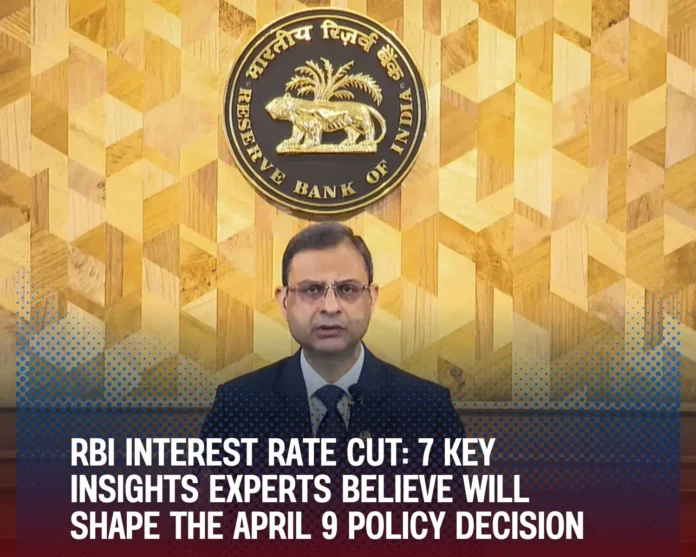Introduction
India’s financial markets are abuzz with anticipation as the RBI interest rate cut appears increasingly probable ahead of the upcoming Monetary Policy Committee (MPC) meeting. Market observers suggest that a 25-basis points reduction in the repo rate may be on the cards, fueled by favorable inflation trends and the need to spur economic momentum.
Let’s delve into the key factors that are shaping this outlook, as shared by economists, rating agencies, and industry insiders, all under the lens of macroeconomic stability and global headwinds.
1. Favorable Inflation Data Opens Room for Rate Easing
According to recent retail inflation data, consumer price index-based inflation fell to 3.61% in February, marking a seven-month low. This decline has been largely attributed to softening prices in vegetables and protein-rich items like eggs and meat. Experts highlighted that with retail inflation comfortably below the RBI’s upper tolerance band, the central bank has greater policy flexibility to lower rates without stoking price instability.
Furthermore, the inflation rate had stood at 4.26% in January and 5.09% in February 2024, making the latest figure notably reassuring for monetary policymakers.
2. Current Repo Rate Has Been Static Since February 2023
The RBI interest rate cut gains further significance when contextualized against the unchanged repo rate of 6.5% since February 2023. Prior to that, the last rate reduction occurred in May 2020 during the pandemic-driven economic downturn. This long pause has fostered a stable monetary environment, but it also means there’s pent-up demand for accommodative action, especially as growth drivers need reinforcement.
The last move—a 25 bps cut to 6.25%—was made in February 2025 and was seen as a signal of RBI’s renewed dovish stance.
3. Global Trade Tensions Pose Fresh Risks

International developments are expected to influence the MPC’s policy tone. As per economists like Madan Sabnavis, Chief Economist at Bank of Baroda, the reciprocal tariffs imposed by the U.S. on April 2, targeting 60 nations including India, could impact growth prospects and currency dynamics. These concerns may prompt the MPC to act pre-emptively in favor of economic cushioning.
The tariff range of 11%–49% is likely to alter global trade dynamics, and India must remain agile to offset competitive disadvantages faced by peer exporters like China, Vietnam, and Bangladesh.
4. Rate Cut Likely to Support Consumption and Housing
The impact of a reduced repo rate, if passed on promptly by commercial banks, can stimulate borrowing, boost consumption, and revitalize key sectors like real estate. Pradeep Aggarwal, Chairman of Signature Global (India) Ltd, believes that a 25 bps reduction could make home loans more affordable, encouraging first-time buyers and investors to act.
Such a move could also catalyze growth in construction, infrastructure, and associated supply chains—crucial engines for job creation and economic expansion.
5. Liquidity Measures Already in Play
Although experts predict a rate cut, it’s not expected that the RBI will simultaneously introduce aggressive liquidity measures like CRR (Cash Reserve Ratio) cuts. According to ICRA, the RBI’s ongoing liquidity injections via forward book unwindings and VRR maturities are designed to ensure smoother rate transmission rather than introduce fresh surplus.
This suggests that monetary transmission, rather than new monetary easing, remains a top priority.
6. Divergence of Views Among Industry Bodies
While analysts foresee a probable cut, not all stakeholders agree. Industry body Assocham advocates a more cautious, wait-and-watch approach, arguing that recently implemented liquidity steps need time to show their effects on capital expenditure and consumer demand.
Sanjay Nayar, Assocham President, maintains that the central bank should monitor the outcome of previous actions before introducing additional interventions.
7. GDP Growth Outlook Remains Steady Despite Headwinds
Despite external trade uncertainties, the Indian economy is projected to grow at 6.7% in FY26, according to policymakers and economists. This suggests that while growth support is desirable, it is not yet urgent or critical, giving the RBI room to balance caution with stimulus.
At the same time, maintaining price stability remains central to long-term growth, reinforcing the case for measured, data-backed policy moves.
Conclusion: What Lies Ahead for Borrowers and Markets?
With the MPC’s 54th meeting underway from April 7, and a decision expected on April 9, 2025, all eyes are on Governor Sanjay Malhotra and his colleagues. Should the RBI interest rate cut materialize, it may mark the beginning of a broader accommodative stance, as hinted by economists.
That said, the effectiveness of this cut will hinge on how quickly banks adjust lending rates and how robustly consumption and investment respond. For now, the broader message is clear: a careful but hopeful monetary pivot is likely in motion.
Disclaimer: The views expressed in this article are based on statements by experts and publicly available data. Policy decisions are subject to change based on evolving economic conditions. Readers are advised to consult financial professionals for personalized guidance.


